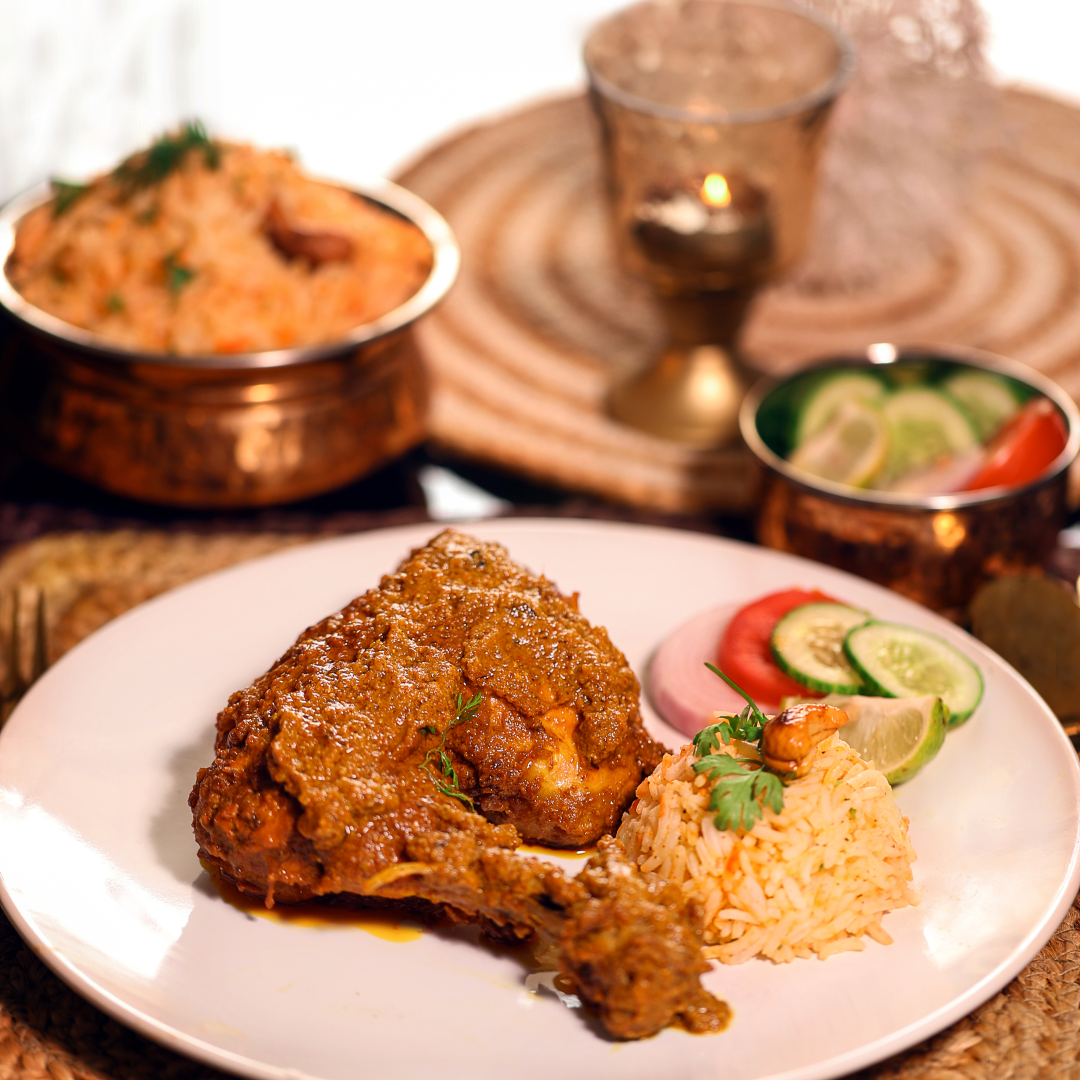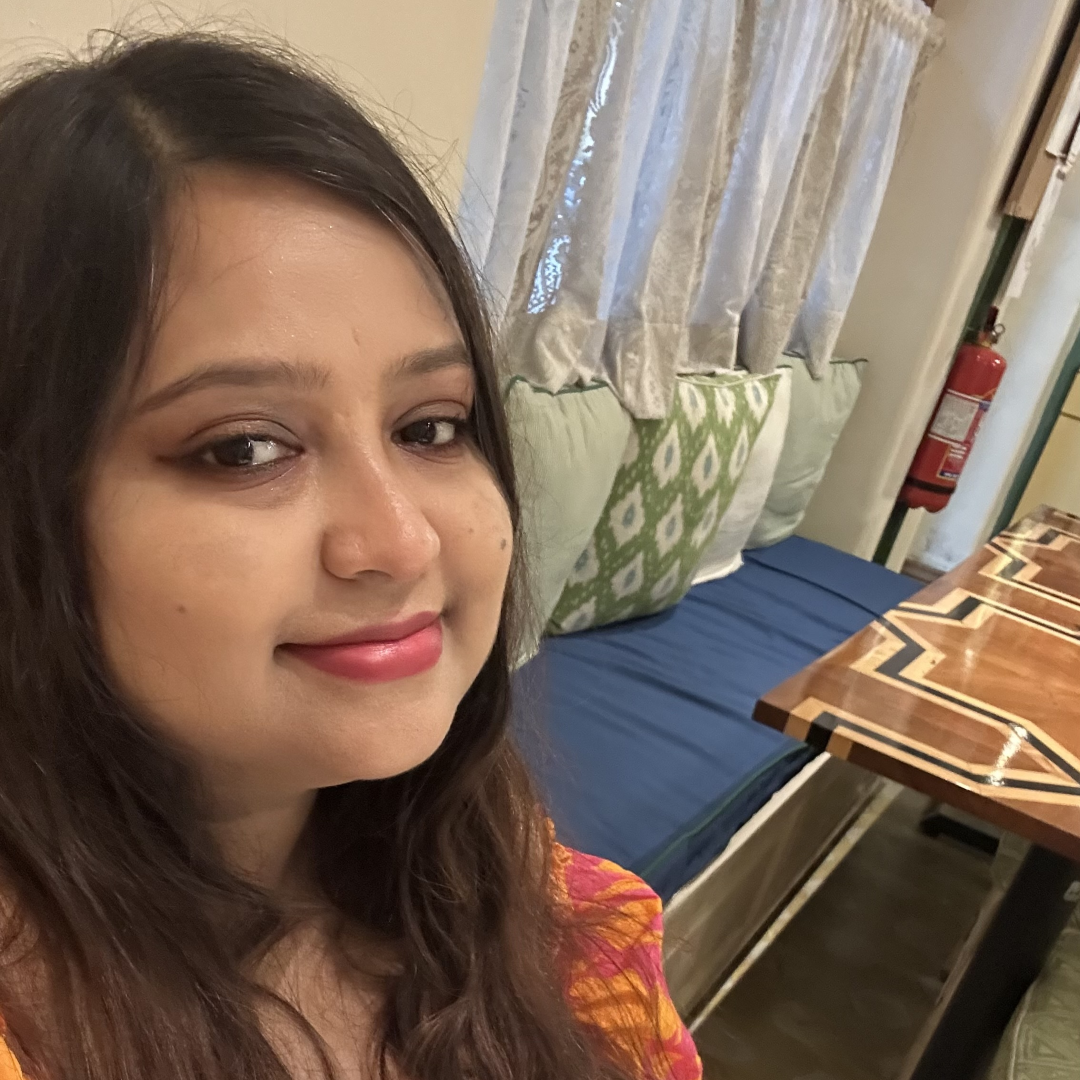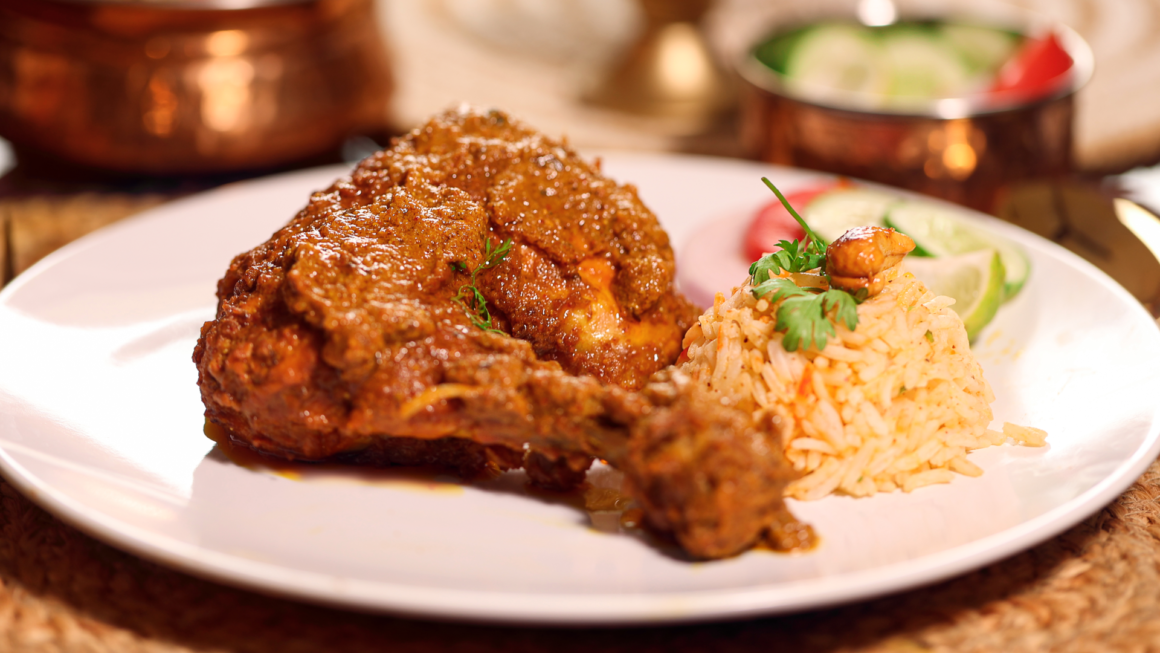Chicken Chaap has a deep connection to my roots and family traditions. Growing up, visits to Kolkata always meant the enticing aroma of Mughlai kitchens in the air. The dish, with its origins in the Nawabs of Awadh, became a celebrated addition to Bengali households, including mine.
After marriage, this recipe took on even more significance. My mother-in-law, an incredible cook, guided me in perfecting this dish. I treasure those moments in the kitchen, where love, tradition, and flavours were passed down through generations.

Today, Chicken Chaap holds a special place at our family table. It’s a dish my husband and daughter adore, filling our home with the warmth of spices and cherished memories.
A Historical Note
Chicken Chaap is a signature dish of Mughlai cuisine in Bengal, especially popular in Kolkata’s iconic eateries like Shiraz and Arsalan. Alongside Kolkata Biryani, it reflects the culinary legacy of Nawab Wajid Ali Shah, who introduced the grandeur of Awadhi cuisine to Bengal during his exile.
Chicken Chaap
Ingredients
For the First Marination:
- Lemon juice: 2 tbsp
- Red chilli powder: 1 tsp
- Chicken drumsticks or thighs: 4
For the Second Marination:
- Coriander seeds: 1-1½ tbsp
- Garlic: 7-8 cloves
- Ginger: 1 tsp
- Onions: 2 medium size, roughly chopped
- Green chillies: 4
- Chilli powder: 1 tbsp
- Yoghurt: 1 small cup
- Khoya (reduced milk): 2 tbsp
- Gram flour (besan): 2 tbsp
- Rose essence (mithha atar): ½ tsp
- Kewra water (optional): 3-4 drops
- Pinch of saffron soaked in warm water (optional): 1
(Blend garlic, ginger, onions, and green chillies into a fine paste.)
For the Gravy Paste:
- Poppy seeds (posto): 4 tbsp
- Melon seeds (charmagaz): 2 tbsp
- Cashew nuts: ½ cup
(Soak all three and blend into a smooth paste.)
For Cooking:
- Ghee (clarified butter): 2 tbsp
- White oil (adjust as needed): 4 tbsp
- Kolkata garam masala: 1 tsp
For Kolkata Garam Masala:
- Cinnamon stick: 1-inch
- Green cardamom pods: 6-8
- Cloves: 4-5
- Shahi jeera: 1 tbsp
- Black peppercorns: 6-8
- Bay leaves: 2
- A pinch of freshly grated nutmeg
- Mace flower (optional): 1
(Dry roast the spices and grind into a fine powder.)
Method:
- First Marination:
- Clean the chicken pieces thoroughly and make deep slits in them.
- Rub the chicken with lemon juice and chilli powder. Let it rest for 30 minutes.
- Second Marination:
- Mix the garlic-ginger-onion-green chilli paste with yoghurt, khoya, gram flour, rose essence, kewra water, and saffron.
- Coat the chicken pieces thoroughly, ensuring the marinade seeps into the slits.
- Cover and refrigerate for 4–6 hours, preferably overnight.
- Cooking the Chicken:
- Heat a mix of ghee and white oil in a heavy-bottomed kadhai (wok).
- Lightly fry the marinated chicken pieces until golden. Set aside.
- Add the remaining marinade to the pan and sauté on medium heat until the oil separates.
- Stir in the posto-cashew paste and cook gently to allow the flavours to meld.
- Return the chicken to the pan, cooking on a low flame until tender, stirring occasionally. Add warm water if needed to adjust the gravy consistency.
- Sprinkle Kolkata garam masala over the top and finish with a drizzle of ghee.
- Serving Suggestions:
- Serve hot with Kolkata-style biryani, paratha, or naan pulao.
Watch this recipe here – Chicken Chaap

Chef Bilkis Khan is a chef, recipe developer, food photographer, and stylist based in Mumbai. She creates unique flavour profiles for spice and F&B companies, elevating everyday meals.
Bilkis won the UpperCrust Home Chef Studio Contest in 2023 and was the first runner-up in the Kahi Gum Na Ho Gaye Lost Recipes Contest, Season 7, where she showcased Maharashtrian cuisine.
Her culinary journey led her to the Blue Elephant Bangkok Cooking School, where she trained under legendary MasterChef Nooror Somany Steppe, enriching her knowledge of Thai cuisine and culture.
Beyond cooking, Bilkis is a skilled food photographer and stylist. She curates pop-ups, leads culinary workshops, and teaches food styling classes, sharing her passion for cooking, creativity, and entrepreneurship.
Translations and detailed descriptions are provided to give a better understanding of the story to people from different cultural backgrounds across the globe.

